When it comes to choosing the perfect family vehicle, two models that stand out in the current automotive landscape are the Mercedes B-Klasse and the VW Taigo. Each offers its unique blend of features, aesthetics, and technical performance. But how do they measure up against each other? Let’s dive into a detailed comparison to help you make an informed decision.
Mercedes B Class vs VW Taigo – Which model is better for everyday use?
Everyday use, family trips or long-distance drives – here’s where the differences show.
Discover whether Mercedes B Class or VW Taigo fits your lifestyle better.
Design and Dimensions
Starting with the design, the Mercedes B-Klasse is an MPV known for its spaciousness and practicality. It measures 4419 mm in length, 1796 mm in width, and stands 1562 mm tall. With a trunk capacity of 455 liters, it excels in transporting both passengers and luggage.
The VW Taigo, on the other hand, is a stylish SUV with a more compact feel. It stretches 4266 mm in length and boasts a width of 1757 mm and a height of 1518 mm. Although it has a slightly smaller trunk capacity of 440 liters, its sporty design may appeal to a younger demographic looking for functionality without sacrificing style.
Engine Options and Performance
In terms of engine options, the Mercedes B-Klasse offers a variety of powertrains, including petrol MHEV, diesel, and plug-in hybrid options. The power ranges from 116 HP up to a robust 238 HP, and it features a selection of transmissions, including dual-clutch automatic and traditional automatics. The B-Klasse excels with a maximum speed of 250 km/h and impressive acceleration, reaching 0-100 km/h in as little as 6.5 seconds.
The Taigo, while limited to petrol engines, provides a range of 95 HP to 150 HP. With manual or dual-clutch automatic transmission options, it offers decent performance, but not quite to the level of the B-Klasse, with 0-100 km/h times ranging from 8.2 to 11.1 seconds and a top speed of 212 km/h. The Taigo shines in fuel efficiency, with consumption figures around 5.4 to 5.8 L/100km.
Innovations and Technology
Mercedes-Benz is renowned for its innovative technology, and the B-Klasse is no exception. It comes equipped with the latest MBUX infotainment system, featuring voice activation, a user-friendly touchscreen interface, and connectivity options like Apple CarPlay and Android Auto. The array of driver assistance features includes adaptive cruise control and lane-keeping assist, emphasizing safety and driver comfort.
The VW Taigo also incorporates modern technology, boasting a digital cockpit and an infotainment system that is both intuitive and responsive. While it does offer some driver assistance features, it may not match the extensive options found in the B-Klasse, particularly in premium safety tech.
Efficiency and Environmental Impact
The Mercedes B-Klasse features a commendable range of efficiencies, with various models achieving as low as 0.8 L/100km in hybrid mode and CO2 emissions starting at 134 g/km. This enables environmentally-conscious driving without sacrificing performance.
The Taigo, while slightly lower in performance specs, offers impressive fuel efficiency, making it an excellent option for daily commuters. With CO2 emissions ranging from 123 to 132 g/km, it appeals to those looking to reduce their carbon footprint.
Pricing and Value
Pricing for the B-Klasse generally reflects its premium positioning, offering high-end features and luxury finishes. The investment, however, is justified by its extensive capabilities and brand prestige.
The VW Taigo represents a more budget-friendly option without compromising too much on style and technology. It’s ideal for young families or first-time car buyers looking for a practical yet modern SUV.
Conclusion
In the battle between the Mercedes B-Klasse and the VW Taigo, the choice largely comes down to personal preference and specific needs. If luxury, advanced technology, and performance are your top priorities, the B-Klasse is undoubtedly the standout option. Conversely, for those seeking a stylish yet cost-effective solution, the Taigo shines with its modern appeal and efficient engine offerings.
Ultimately, both models serve their respective audiences well, proving that whether you opt for the practical luxury of the B-Klasse or the vibrant design of the Taigo, you can’t go wrong.
Here’s where it gets real: The technical differences in detail
Costs and Efficiency:
Price and efficiency are key factors when choosing a car – and this is often where the real differences emerge.
VW Taigo has a decisively advantage in terms of price – it starts at 19600 £, while the Mercedes B Class costs 33100 £. That’s a price difference of around 13505 £.
Fuel consumption also shows a difference: Mercedes B Class manages with 2.50 L and is therefore clearly more efficient than the VW Taigo with 5.30 L. The difference is about 2.80 L per 100 km.
Engine and Performance:
Under the bonnet, it becomes clear which model is tuned for sportiness and which one takes the lead when you hit the accelerator.
When it comes to engine power, the Mercedes B Class has a evident edge – offering 238 HP compared to 150 HP. That’s roughly 88 HP more horsepower.
In acceleration from 0 to 100 km/h, the Mercedes B Class is noticeable quicker – completing the sprint in 6.50 s, while the VW Taigo takes 8.20 s. That’s about 1.70 s faster.
In terms of top speed, the Mercedes B Class performs slightly better – reaching 250 km/h, while the VW Taigo tops out at 212 km/h. The difference is around 38 km/h.
There’s also a difference in torque: Mercedes B Class pulls clearly stronger with 450 Nm compared to 250 Nm. That’s about 200 Nm difference.
Space and Everyday Use:
Beyond pure performance, interior space and usability matter most in daily life. This is where you see which car is more practical and versatile.
Both vehicles offer seating for 5 people.
In curb weight, VW Taigo is to a small extent lighter – 1229 kg compared to 1405 kg. The difference is around 176 kg.
In terms of boot space, the Mercedes B Class offers barely noticeable more room – 455 L compared to 440 L. That’s a difference of about 15 L.
In maximum load capacity, the Mercedes B Class performs evident better – up to 1540 L, which is about 318 L more than the VW Taigo.
When it comes to payload, Mercedes B Class to a small extent takes the win – 550 kg compared to 457 kg. That’s a difference of about 93 kg.
Who wins the race?
The Mercedes B Class proves to be dominates this comparison and therefore becomes our DriveDuel Champion!
Mercedes B Class is the better all-rounder in this comparison.

Mercedes B Class
Mercedes B Class
The Mercedes-Benz B-Class offers a blend of practicality and luxury that sets it apart in the compact MPV segment. Its spacious and versatile interior is complemented by high-quality materials and a sleek design, making it ideal for both families and individuals seeking a touch of elegance on their daily commute. Advanced technology and safety features round out the package, ensuring a comfortable and secure driving experience.
details @ group-media.mercedes-benz.com
@ group-media.mercedes-benz.com
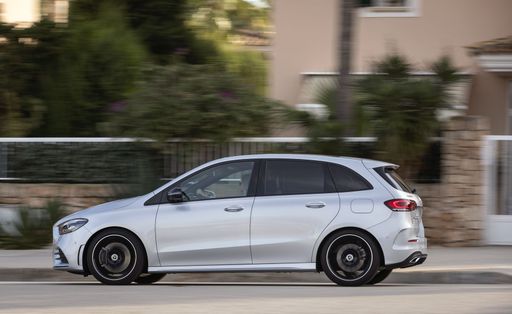 @ group-media.mercedes-benz.com
@ group-media.mercedes-benz.com
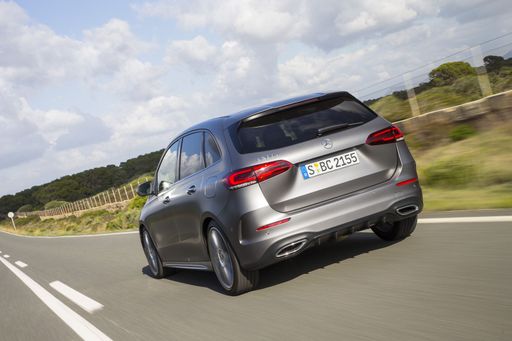 @ group-media.mercedes-benz.com
@ group-media.mercedes-benz.com
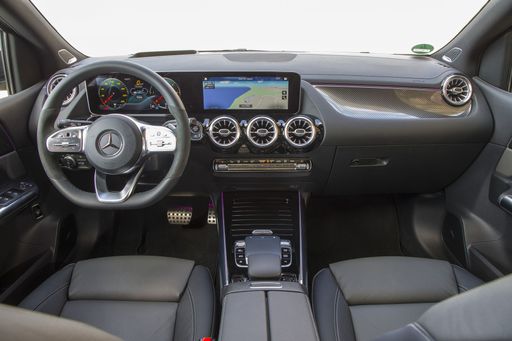 @ group-media.mercedes-benz.com
@ group-media.mercedes-benz.com
 @ group-media.mercedes-benz.com
@ group-media.mercedes-benz.com
VW Taigo
Der VW Taigo besticht durch sein dynamisches Design, das sportliche Eleganz mit robusten Akzenten vereint. Im Innenraum setzt er auf modernste digitale Technologien, die dem Fahrer ein komfortables und vernetztes Fahrerlebnis bieten. Seine erhöhte Sitzposition sorgt für eine hervorragende Sicht und macht ihn sowohl für die Stadt als auch für längere Fahrten bestens geeignet.
details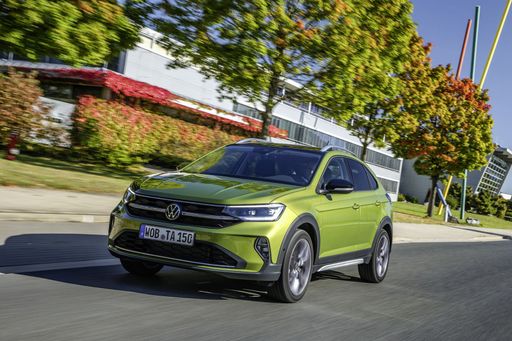 @ Volkswagen
@ Volkswagen
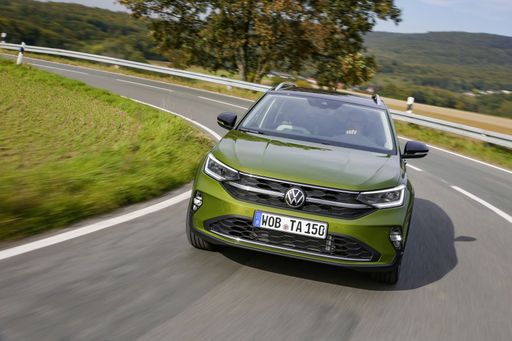 @ Volkswagen
@ Volkswagen
 @ Volkswagen
@ Volkswagen
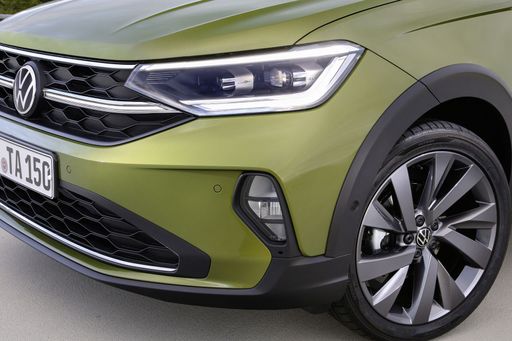 @ Volkswagen
@ Volkswagen
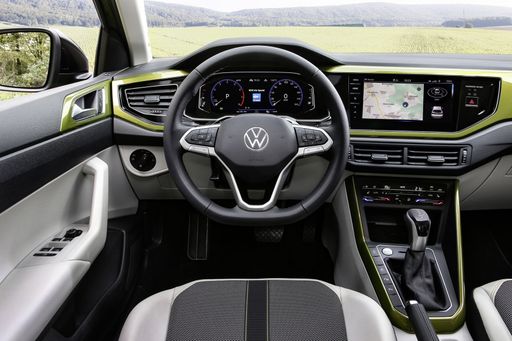 @ Volkswagen
@ Volkswagen

|

|
|
|
|
Costs and Consumption |
|
|---|---|
|
Price
33100 - 52500 £
|
Price
19600 - 31300 £
|
|
Consumption L/100km
2.5 - 6.9 L
|
Consumption L/100km
5.3 - 5.8 L
|
|
Consumption kWh/100km
-
|
Consumption kWh/100km
-
|
|
Electric Range
83 km
|
Electric Range
-
|
|
Battery Capacity
12.90 kWh
|
Battery Capacity
-
|
|
co2
56 - 156 g/km
|
co2
120 - 132 g/km
|
|
Fuel tank capacity
35 - 51 L
|
Fuel tank capacity
40 L
|
Dimensions and Body |
|
|---|---|
|
Body Type
MPV
|
Body Type
SUV
|
|
Seats
5
|
Seats
5
|
|
Doors
5
|
Doors
5
|
|
Curb weight
1405 - 1745 kg
|
Curb weight
1229 - 1302 kg
|
|
Trunk capacity
405 - 455 L
|
Trunk capacity
440 L
|
|
Length
4419 mm
|
Length
4266 mm
|
|
Width
1796 mm
|
Width
1757 mm
|
|
Height
1562 mm
|
Height
1518 mm
|
|
Max trunk capacity
1440 - 1540 L
|
Max trunk capacity
1222 L
|
|
Payload
505 - 550 kg
|
Payload
448 - 457 kg
|
Engine and Performance |
|
|---|---|
|
Engine Type
Plugin Hybrid, Petrol MHEV, Diesel
|
Engine Type
Petrol
|
|
Transmission
Automatic
|
Transmission
Manuel, Automatic
|
|
Transmission Detail
Dual-Clutch Automatic
|
Transmission Detail
Manual Gearbox, Dual-Clutch Automatic
|
|
Drive Type
Front-Wheel Drive, All-Wheel Drive
|
Drive Type
Front-Wheel Drive
|
|
Power HP
116 - 238 HP
|
Power HP
95 - 150 HP
|
|
Acceleration 0-100km/h
6.5 - 10 s
|
Acceleration 0-100km/h
8.2 - 11.1 s
|
|
Max Speed
200 - 250 km/h
|
Max Speed
184 - 212 km/h
|
|
Torque
200 - 450 Nm
|
Torque
175 - 250 Nm
|
|
Number of Cylinders
4
|
Number of Cylinders
3 - 4
|
|
Power kW
85 - 175 kW
|
Power kW
70 - 110 kW
|
|
Engine capacity
1332 - 1991 cm3
|
Engine capacity
999 - 1498 cm3
|
General |
|
|---|---|
|
Model Year
2024 - 2025
|
Model Year
2024 - 2025
|
|
CO2 Efficiency Class
B, D, E, F
|
CO2 Efficiency Class
D
|
|
Brand
Mercedes-Benz
|
Brand
VW
|
What drivetrain options does the Mercedes B Class have?
The Mercedes B Class is offered with Front-Wheel Drive or All-Wheel Drive.
The prices and data displayed are estimates based on German list prices and may vary by country. This information is not legally binding.
